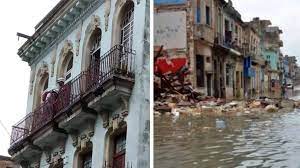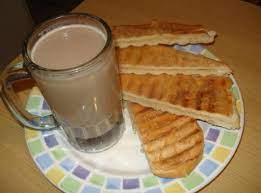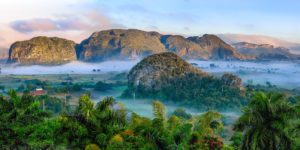LLUVIAS EN LA HABANA PROVOCAN 28 DERRUMBES DE LOS VIEJOS EDIFICIOS. PHOTOS
Los derrumbes ocurrieron en los municipios de Centro Habana, Diez de Octubre y Cerro; de ellos, 17 fueron caídas parciales de techos.
UN TOTAL DE 28 derrumbes dejaron las intensas lluvias de esta semana en La Habana, según informes preliminares del gobierno de la capital cubana.
Los derrumbes ocurrieron en los municipios de Centro Habana, Diez de Octubre y Cerro; de ellos, 17 fueron caídas parciales de techos y 11 de tipología 1, aunque la nota publicada en redes sociales no explica qué magnitud tuvieron estos últimos.
El gobierno de La Habana aseguró que no se lamentaron pérdidas de vidas humanas entre los residentes de las viviendas que sufrieron derrumbes, y fueron “protegidas todas las familias”, aunque no especificó qué ayuda se les brindó a los damnificados y si fueron albergados o permanecen en sus casas tras los daños.
Las autoridades informaron, además, que en la comunidad El Manguito, en Habana del Este, 36 casas sufrieron daños a causa de las inundaciones que provocó el río Cojímar, y dijeron que en el lugar se realizan labores de recuperación y por parte de la oficina de trámites de la Dirección Municipal de la Vivienda.
En 12 horas, entre las 8:00 p.m. del martes y las 8:00 a.m. del miércoles, cayeron más de 100 milímetros de precipitaciones, lo que provocó “diversas afectaciones”, señaló la nota, que no precisó otros efectos causados por el evento natural. Sin embargo, en redes sociales se reportaron las inundaciones en la carretera Monumental, donde los vehículos quedaron atrapados y el tráfico, interrumpido.
La información sobre las afectaciones trascendió en una reunión del Grupo Temporal de Trabajo de La Habana, este miércoles, que evaluó las acciones de “enfrentamiento” a las intensas lluvias ocurridas en la ciudad.
Según Yanet Hernández Pérez, gobernadora de La Habana, sobresalió “la agilidad en la respuesta de las autoridades políticas y gubernamentales, presentes desde horas iniciales de la madrugada en el acompañamiento a los pobladores de sitios vulnerables en los 15 territorios habaneros”.
La nota señaló, además, que el General de División Ramón Pardo Guerra, jefe del Estado Mayor Nacional de la Defensa Civil, “insistió en la necesidad de mantener informada a la población ante eventos meteorológicos que ocurren más allá del límite de la temporada ciclónica, a propósito del cambio climático”.
El Centro de Pronósticos del Instituto de Meteorología informó que durante 24 horas, entre martes y miércoles, se registraron numerosos chubascos, lluvias y tormentas eléctricas en la región occidental del país, llegando a ser fuertes e intensas en algunas localidades de la costa norte, principalmente en La Habana.
La red de estaciones del Instituto de Meteorología y los pluviómetros del Instituto Nacional de Recursos Hidráulicos reportaron acumulados significativos superiores a los 100 milímetros en 16 localidades, de ellos tres superan los 200 milímetros.
En redes sociales se reportaron las inundaciones en varias zonas de la capital y numerosos derrumbes provocados por las fuertes lluvias en la capital, donde es elevado el número de viviendas con riesgo de derrumbe inminente y miles de familias están expuestas a diario a este grave peligro.
RAINS IN HAVANA CAUSE 28 COLLAPSES OF OLD BUILDINGS. PHOTOS
The landslides occurred in the municipalities of Centro Habana, Diez de Octubre and Cerro; of them, 17 were partial roof falls.
A TOTAL OF 28 landslides left this week’s intense rains in Havana, according to preliminary reports from the government of the Cuban capital.
The landslides occurred in the municipalities of Centro Habana, Diez de Octubre and Cerro; Of them, 17 were partial roof falls and 11 were type 1, although the note published on social networks does not explain the magnitude of the latter.
The government of Havana assured that there were no losses of human life among the residents of the homes that suffered collapses, and “all families were protected,” although it did not specify what help was provided to the victims and whether they were sheltered or remain. in their homes after the damage.
The authorities also reported that in the El Manguito community, in Habana del Este, 36 houses suffered damage due to the flooding caused by the Cojímar River, and they said that recovery work is being carried out at the site and by the office of procedures of the Municipal Housing Directorate.
In 12 hours, between 8:00 p.m. on Tuesday and 8:00 a.m. On Wednesday, more than 100 millimeters of precipitation fell, which caused “various effects,” said the note, which did not specify other effects caused by the natural event. However, flooding on the Monumental Highway was reported on social media, where vehicles were trapped and traffic was interrupted.
The information about the effects came to light in a meeting of the Temporary Working Group of Havana, this Wednesday, which evaluated the actions to “confront” the intense rains that occurred in the city.
Agencies/ Wiki/ CiberCuba/ DerrumbesHabanaHist./ Extractos/ Excerpts/ Internet Photos/ Arnoldo Varona/ www.TheCubanHistory.com
THE CUBAN HISTORY, HOLLYWOOD.



















